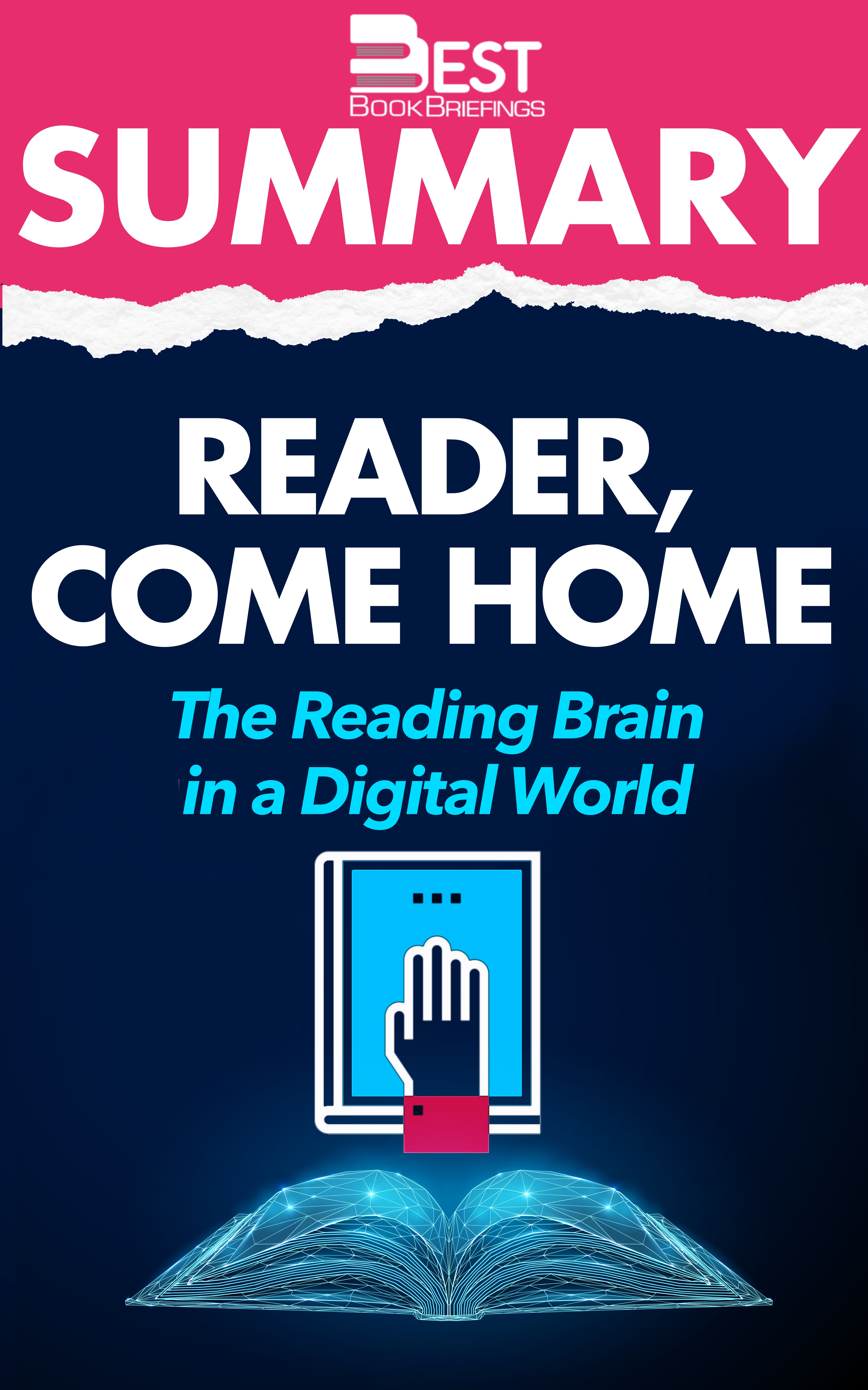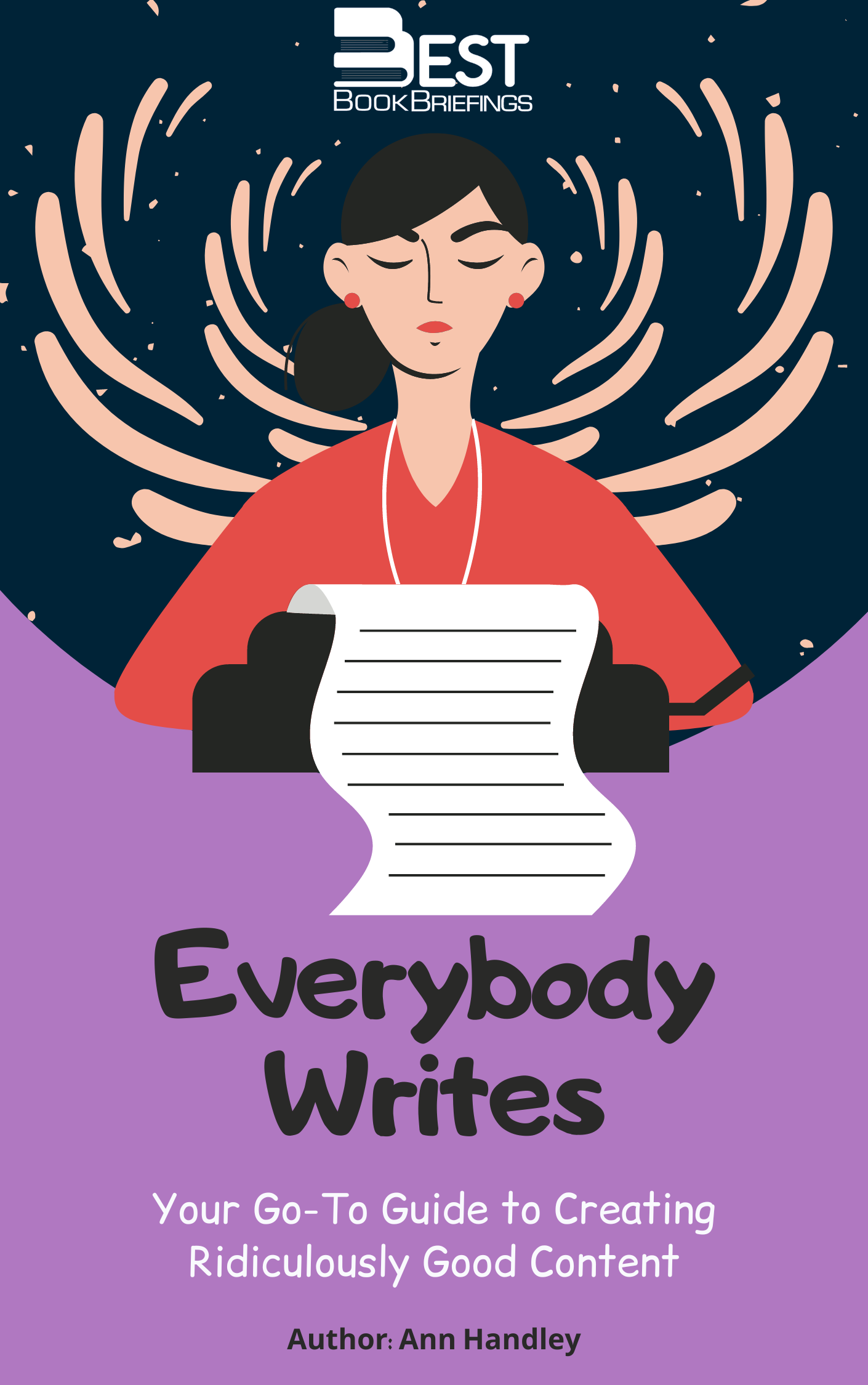Everybody Writes
Your Go-To Guide to Creating Ridiculously Good Content
Editorial Review
Everybody Writes Your Go-To Guide to Creating Ridiculously Good Content Author: Ann Handley Content is everywhere, from TV, the internet, and billboards. However, writing high-quality content is a whole different story. This book summary of Everybody Writes will teach you how to craft content and integrate writing as a daily habit. Why can everybody write? The author states that writing good content isn't really a natural talent. Rather, it is a habit that forms with practice. The author also believes that there're two types of people: The not-haves and the helpless. The first type believes that they can't actually write; in contrast, the other type thinks that they can't. Nonetheless, they’re both wrong. This is because most of us fall in the middle. This means that we're, in fact, capable of writing content that will get better with practice. But why does writing matter so much? Writing is valuable. It has the power to change how you feel, what you think, and what you do. It tells a story and communicates with a lot of people all at once. Thus, the need of content marketing becomes a necessity and not an option. Writing Can Be Learned The author states that good writing can be learned, just like making a balance sheet or learning algebra. The author also provides some wisdom that both beginners and experts can use to hone their writing skills. The first tip is to write every day. Write emails, social media posts, or even a blog. Make it a habit that you practice every day and integrate it into your daily routine. Also, reading a lot is a nice addition to writing. The second tip is to shed the strict and boring rules of academic writing. To illustrate, academic writing has a specific structure that you can’t get creative around. It starts with an introduction, 2 or 3 body paragraphs, and a conclusion. While this structure can help classroom students, it's not as effective outside of academic boundaries. The author points out that there're grammatical rules that you can break as a writer. The most prominent of which are the following: 1. The prominent rule of never starting your sentence with “and,” “but,” and “because” isn't really that effective because they add energy and momentum to a piece. 2. Avoiding sentence fragments is another grammatical rule that is worth breaking, especially if you want to add an aspect of emphasis to your words. An example of sentence fragments is: And that too, or And this.. 3. Never split infinitives is a rule that many English teachers emphasize. This grammatical specifies that you can't let anything come between to and its verb. You can break this grammatical rule as long as you keep the original meaning of the sentence intact. 4. Ending a sentence with a proposition is also one of the grammatical faults you can make. However, unless ending the sentence with a proposition totally destroys what you originally meant, feel free to end the sentence with a proposition. 5. The final grammatical rule that you can break without feeling guilty is writing a paragraph that’s just one sentence long. The author discusses that the idea of white space in your written piece can sometimes do more good than harm. Moreover, the author suggests letting go of what you've learned at school. Instead, develop your own writing style. However, when you write, you can use the aid of flow charts, sticky notes, or lists to map out your main ideas. The third tip is to respect the time and mind of your reader. Stat emphatic of your reader. This means not making your reader work hard to understand you. Keep it simple and easily understood. Also, use a customer-centric point of view in your writing that will relate back to your customer and their pain points. The fourth tip is to place the important words and ideas at the beginning of each sentence. This means focusing on the main idea rather than little details that won't spark your reader's curiosity. This can be done by highlighting the 'primary idea' and the 'secondary idea.' The author provides some phrases to avoid at the start of a sentence: · According to · In my opinion · In 2014, [or any other year] The fifth and final tip is to think before you write. To some writers, this might seems counterproductive; however, not thinking thoroughly before you write can make it even harder for you to reach a clear point you want to express and how to make it relatable to your audience. How to make your reader relate Being relatable is one of the most important aspects of writing. This is because your reader has to feel like you understand them in order for them to trust you. The author offers some tips that will help your writing become more relatable than it is. First, you have to make your story engaging. Put your reader into the heart of the story. This is because people relate more when they feel engaged with the written content. For example, you can use set up a scenario in which your piece solves the reader's problem. Second, you have to describe the problem so that the reader can relate to it. Your clear understanding of the reader’s problem will put readers in a place they can identify with. Then, your piece will come with the solution. Third, you have to ask questions or quote a crazy or controversial bit of data to get your reader’s attention. It will also set up the atmosphere for whatever comes next. You can use other tools, like analogies, making a bold statement, or a quote. It really depends on what piece you're writing. You can also add a tonal surprise to maintain the reader’s attention. Fourth, you have to restate the main idea as a kind of short summary to remind your reader of the important topics you discussed in your piece. Writing rules you’d want to follow Most people think that writing is solely about grammar; however, writing is more about rewriting. The author provides a set of tools that will make your writing crystal clear. First, the author suggests steering clear of jargon and buzzwords. You can use one or two for the sake of using business words. However, if you use them in a non-sparing manner, they will make your piece toxic and non-comprehensive. Instead, try to use real words that everyone can understand. Second, you should also avoid frankenwords and obese words. Frankenwords are words that are awkwardly together to create a mess. An example is words like ginormous or solopreneur. Moreover, you have to avoid words that are additives, which can make words tiresome to read and understand. An example of an additive is “workshopping” or “bucketize.” Third, you have to ditch the passive voice in favour of an active voice. Active voice makes you sound more human and conversational. In contrast, passive tends to be more awkward. The fourth and final tip is to avoid fuzzy words that just take up much space without really doing the hard work of proving your point. Marketers are guilty of writing fuzzy words too much in their writing. For example, using way by which contains a lot of fuzziness. Instead, you can use Ways as a simpler alternative. Know your story and tone Knowing what you do is easy, but knowing why you do it is a little more tricky. This ‘why’ is the reason people hire your service or buy your product. Your brand story is one of the most important aspects of your brand. If you get your customers and prospects along on your brand story, they'll be more invested in your company. But how can you produce a good brand story? First, you have to tell your story like nobody hasn't before. Tell people why they should care rather than a robotic speech about what you do. Second, when writing your brand story, you are better off avoiding buzzwords that are really useless and sound complicated. Third, don’t use a template that a hundred other companies can use. Aim to be unique rather than blending in with the crowd of all the other companies. Thus, you have to tell your brand story in a story only your brand can tell. Moreover, brand voice is also an important aspect of your brand identity. Brand voice can be defined as the expression of your company’s personality and point of view. This personality is expressed in how words sound when they’re read. Also, it's a long-term process that not all companies develop, so you still have a chance there! So, how can you develop a unique brand voice? Your unique voice comes from knowing who you are and how you set yourself apart from the rest. It also navigates the experience you deliver for your readers. This is why you should use your voice as a differentiator in all your customer-focused communications. Also, it’s important to note that you can change your tone in various situations. Voice; however, doesn’t change, but your tone should, depending on the situation and the feelings you’re trying to convey.
Book Reviews
Books on Related Topics

Learning how to read was a profound cultural and cognitive shift in the history of human beings. Reading has the capacity of changing the course of one’s life. Most of us know how to read, and thanks to recent research and books, like Maryanne Wolf’s Proust and the Squid, how the

In 2006, co-authors Robert Scoble and Shel Israel wrote Naked Conversations, a book that persuaded businesses to embrace what we now call social media. Six years later they have teamed up again to report that social media is but one of five converging forces that promise to change virtually every aspect

When and where have you been a part of a culture of thinking? That is, when have you been in a place where the group’s collective thinking as well as each individual’s thinking was valued, visible, and actively promoted as part of the regular day-to-day experience of all group members? Over



